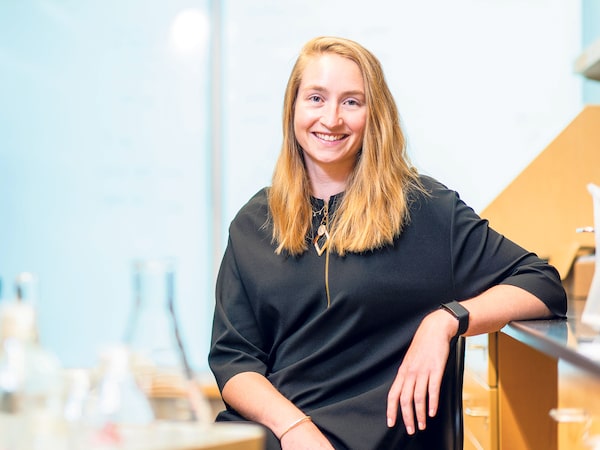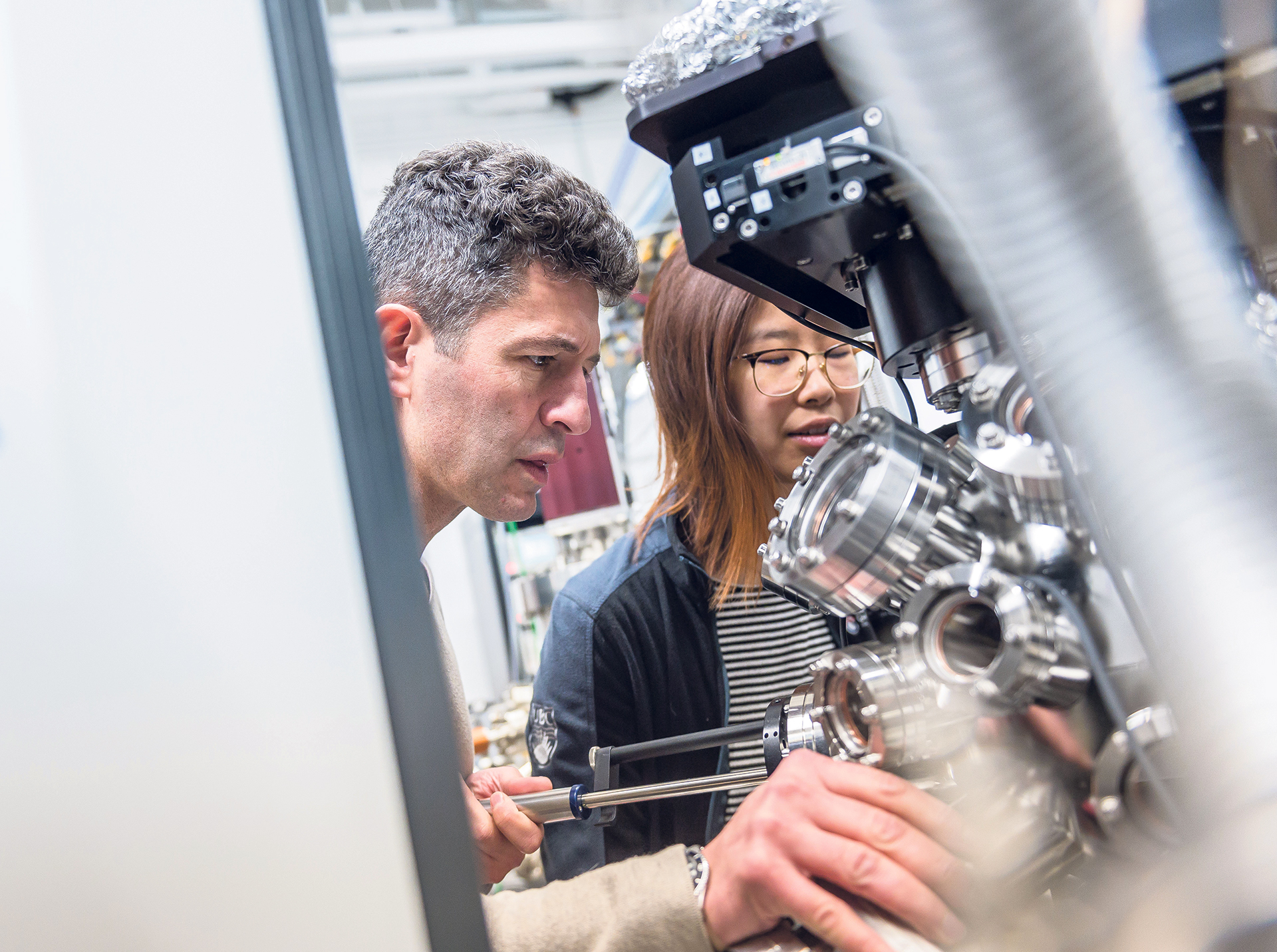UBC pushing the boundaries of knowledge

Among the many scientists conducting groundbreaking work at UBC are Anna Blakney, assistant professor at UBC’s Michael Smith Laboratories and School of Biomedical Engineering.PAUL JOSEPH/UBC
From creating entirely new materials from single layers of atoms and instructing the body’s own genetic machinery to fight disease, to honing the performance of instruments capable of detecting invisible objects thousands of light years away, scientists at the University of British Columbia (UBC) are leading the globe in key research areas that are helping to grow the Canadian economy and build a more sustainable and equitable society. And none of this work would be possible without UBC’s cutting-edge labs, facilities and equipment, which have been supported by investments from the Canada Foundation for Innovation (CFI) over the last 25 years.
For example, while Anna Blakney’s and Andrea Damascelli’s fields of study might seem to have nothing in common, both researchers rely on highly specialized, sophisticated tools and infrastructure.
Dr. Blakney likes to say she was doing mRNA research “before it was cool.” Before coming to UBC, she was on the U.K. team that developed a COVID vaccine. Drawn here by UBC’s leadership in health and bio-innovation research – for which Vancouver has become a thriving hub due in part to UBC spinoff companies, Dr. Blakney says she has been able to equip her lab with the specific tools needed to make and formulate RNA thanks in part to investments from the CFI.
Dr. Blakney is working to learn “how the molecular design and formulations affect which cells and tissues RNA gets into.” Her aim is to use this knowledge to help create the next generation of RNA vaccines and therapies. “There’s really a whole wealth of diseases RNA technology could be applied to,” she explains.
Take influenza, for example. Flu vaccines have traditionally been grown in eggs, and thus take many months to manufacture. And because the circulating virus can change over that time, flu shots are only 30 to 40 per cent effective. By contrast, because mRNA vaccines don’t require cells, they can be made far more quickly and cheaply. The platform technology is almost “plug and play,” and consequently, can turn out millions of doses of vaccine only weeks after a virus candidate is identified. This could make it possible to tailor vaccine formulations to match mutating strains of virus throughout flu season.
Another promising area relates to treatments that are capable of subduing a virus in the body within hours. For instance, “there are antibody treatments for COVID-19 – AbCellera here in Vancouver has developed one,” Dr. Blakney says. While the resulting immunity is nowhere near as long-lasting as that induced by immunization, “there are outbreak situations, like Ebola, where it would be really useful to have a neutralizing antibody ready,” she explains.

Andrea Damascelli, professor at UBC Department of Physics and Astronomy and scientific director of the Stewart Blusson Quantum Matter Institute, pictured with MengXing (Ketty) Na, PhD student.PAUL JOSEPH/UBC
A third frontier: using RNA-based medications to coax the body to manufacture its own supply of powerful biologics like those used to treat diseases such as rheumatoid arthritis. Currently, “these drugs are life-changing, but inaccessible to a lot of the global population,” Dr. Blakney notes, since most of them are administered by IV infusion, and they can cost up to $10,000 a dose. “If we could change the way we make these and encode it into RNA instead, we could make them a lot more accessible,” she adds.
Research taking place at UBC’s Stewart Blusson Quantum Matter Institute (QMI) has the potential to be equally transformational for other technologies, ranging from clean energy to quantum computing applications. Dr. Damascelli, scientific director of the Blusson QMI, studies quantum materials, which behave in ways that can’t be explained by classical physics. Dr. Damascelli and his colleagues harness these unusual physical properties to “design, discover and make new materials that could be used for more efficient electronics and in completely new technologies,” he explains.
For instance, in a world-first discovery, Dr. Damascelli and his team induced superconductivity in graphene (a single layer of carbon atoms that’s both flexible and stronger than steel) in a new way – by coating it with lithium. Since electricity passes through superconductors with zero resistance, they have the potential to radically improve the efficiency of technologies such as quantum computers and sensors. The catch? Most superconductors discovered to date only work at prohibitively low temperatures.
However, another UBC researcher has widened that temperature window. Marcel Franz, deputy scientific director of UBC’s Blusson QMI, recently proposed a path towards the creation of a high-temperature topological superconductor by stacking two atomically thin layers of a copper-oxide material atop one another at a specific angle. “This could be a revolutionary material for quantum computing,” explains Dr. Damascelli. “Perhaps one of the most promising at this stage.”
Yet institute researchers aren’t only breaking ground on discoveries at the atomic level; they’re also helping to expand our knowledge of the universe far beyond Earth. The Blusson QMI team, for instance, is improving the sensitivity of devices that detect gravitational waves, or “ripples” in space-time. Other institute scientists are collaborating with the Canadian Space Agency to develop devices to detect X-ray emission from black holes. “We have the technology to develop those detectors – and the infrastructure to make the materials needed to fabricate them,” Dr. Damascelli explains. One example: a machine that creates nanoscale circuits essential in sensing tools, yet too small to be seen with an optical microscope.
According to Dr. Damascelli, ongoing support from the CFI and other funders “has led Canada to become a leader at the very forefront of the quantum technologies that are poised to transform many aspects of society.”
Advertising feature produced by Randall Anthony Communications. The Globe’s editorial department was not involved.